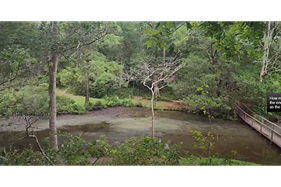Using Phrygian Dominant for Middle Eastern jam
I was asked if I wanted to do a “Middle Eastern jam,” so I said “sure” and busted out the old Phrygian Dominant Scale….
The name of this blog is “Wingin’ It” which is obviously a play on my last name, but it’s also fitting that I love to improvise. Sometimes the improvisation is actually the tune itself, not just the solo within it. How does one make up a tune on the fly?
Family Vacation
As I write this, my family and I are on vacation in Myrtle Beach, SC and we are having a wonderful time. We have a friend, Cliff Hackford, who lives in town near the Meher Baba Center and has been an active member there for most of his life. Cliff and I used to play together in NYC and he played drums on & even produced a few of my early albums.
wonderful time. We have a friend, Cliff Hackford, who lives in town near the Meher Baba Center and has been an active member there for most of his life. Cliff and I used to play together in NYC and he played drums on & even produced a few of my early albums.
In any event, two days ago we were visiting Cliff and his wife & we went down to the Center and had a jam session on the instruments that were laying around the center: a decent classical guitar and a cajon. We played 4 or 5 tunes during “tea time.” Cliff’s broken arm was still healing and his range of motion was limited. We played a few melodies of tunes that I thought of that would fit the grooves he laid down, and at one point he asked “Can we do a Middle Eastern groove?”
Phrygian Dominant
I said “sure” even though I’ve never memorized any Middle Eastern music. So what to do? Well, I know that a common Middle Eastern Scale is the Phrygian Dominant scale (I actually have a double-album and educational package on 82 common and exotic modes called “For Music Geeks Only.”) So I randomly chose a key (in this case D, because it’s guitar-friendly with the open D string that could be used as a potential drone, and also because we had already played in the other common keys of E & A prior to that) and started making up a melody in Phrygian Dominant.
What about the form? A scale over a drone can be enough, but it might be a bit one-dimensional. I like to have some chord changes to keep things moving along, generally. I chose to add a Cm7 chord which is diatonic to D Phrygian Dominant (which is the 5th mode of G harmonic minor). When switching to Cm, I could have tried to keep the scale as-is, but I didn’t for two reasons: 1) the notes of D Phrygian Dominant, which are d, eb, f#, g, a, bb, c would be, to the Cm chord, the 2, b3, #4, 5, 6, b7 & 1, respectively and I simply couldn’t think “C Dorian #4” fast enough and 2) I think trying to stay in one mode makes a song too one-dimensional, so it was more of a contrast to play regular Dorian, and only one different to the scale used on the D chord.
From there I also decided to add a Gm chord, as it would sound like the IV chord of D, not the I chord of G harmonic minor. Over the Gm chord, I could have used G aeolian (which would have been the same notes as the C dorian), but I think I was unable to conceive of all that on the fly and just played G dorian as well. So, the contrast between G Dorian and D Phrygian Dominant would now be 2 notes different. This would make a nice harmonic contrast and setting for imrpovisation.
Song Form
 Next, I had to be conscious of the form. I spontaneously went to a 12-bar blues form, probably because it’s one of the easiest forms to keep track of. With an AABA form, for example, I would have had two make up two sections rather than 1, and then keep track of where I was in the form at all times. Potentially, making up a Phrygian Dominant melody and chords on the fly with a longer form may have been too much for my little brain to process. The 12-bar form worked much more easily.
Next, I had to be conscious of the form. I spontaneously went to a 12-bar blues form, probably because it’s one of the easiest forms to keep track of. With an AABA form, for example, I would have had two make up two sections rather than 1, and then keep track of where I was in the form at all times. Potentially, making up a Phrygian Dominant melody and chords on the fly with a longer form may have been too much for my little brain to process. The 12-bar form worked much more easily.
Lastly, I wanted to hear a low drone note, so right in the middle of it, I lowered the low E string to D for “drop D tuning,” and I was able to get a low D-drone going in the right places. Here is the video of the jam in its entirety. Let me know what you think and how, if you are a musician, your understanding of spontaneous song-creation may have been expanded via this post.
—
If you want to learn more about common and exotic scales, go to For Music Geeks Only.



